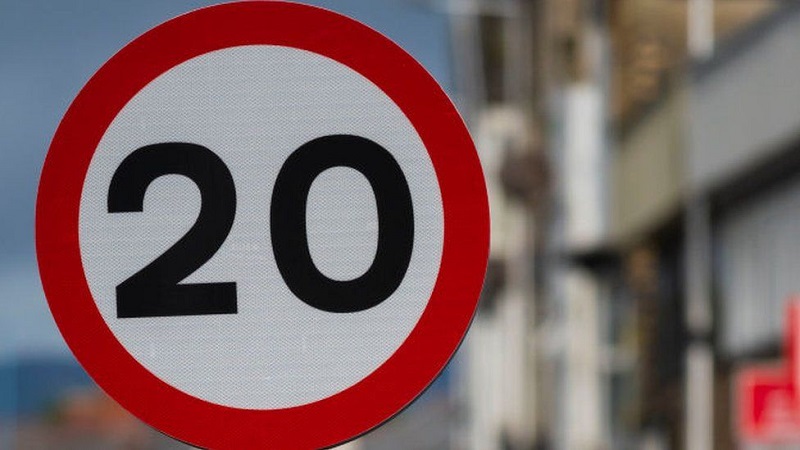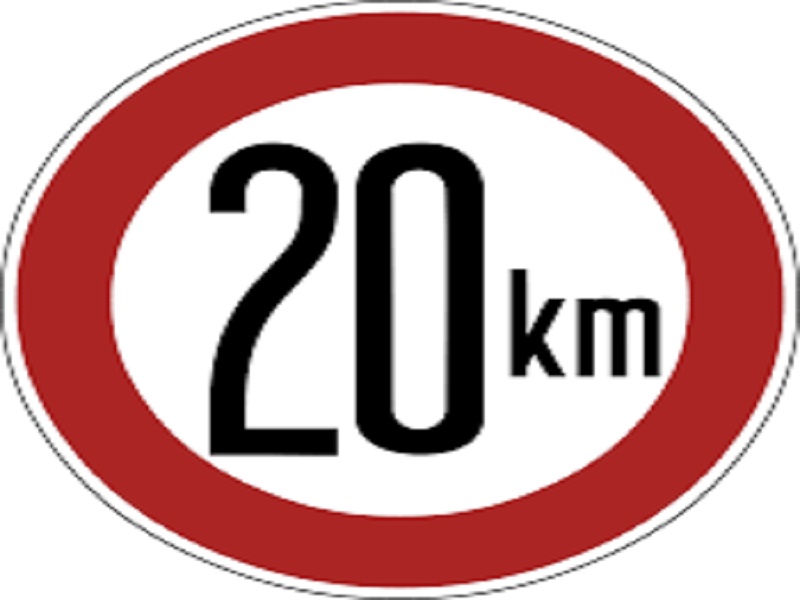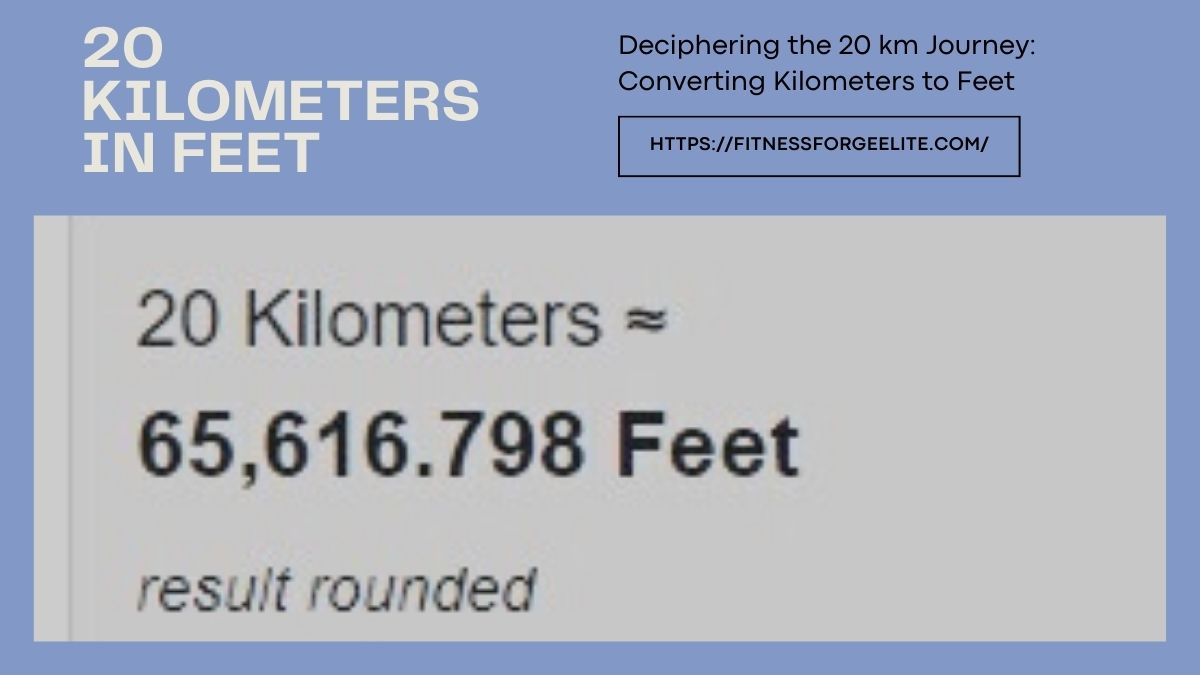20 kilometers in feet Welcome to a journey of measurement conversion where we explore the fascinating world of turning kilometers into feet. Understanding unit conversions may seem mundane at first, but it’s a skill that opens doors to comprehension and practicality in various aspects of life. Today, we embark on a quest to decode the 20-kilometer journey, uncovering its significance and practical applications along the way.
Understanding the Conversion
Relationship Between Kilometers and Feet
Kilometers and feet belong to different measurement systems, with kilometers being a metric unit and feet being an imperial unit. However, understanding their relationship is crucial for effective conversion. One kilometer equals 3280.84 feet, providing the foundation for converting between the two units.
Formula for Conversion
The conversion formula from kilometers to feet is straightforward: multiply the number of kilometers by 3280.84 to obtain the equivalent distance in feet. This simple equation forms the backbone of converting distances from one unit to another accurately.
Read More: Unraveling the Mysteries of 100 Kilometers in Feet: A Comprehensive Guide
Importance of Precision
Precision is paramount in unit conversions, ensuring accuracy in calculations and real-world applications. Even minor discrepancies can lead to significant differences in measurements, highlighting the need for attention to detail and precision in converting kilometers to feet.
Why 20 Kilometers?
Significance of 20 Kilometers
The distance of 20 kilometers holds various significance across different contexts. Whether it’s a challenging running route, a daily commute, or a geographical measurement, 20 kilometers represents a notable distance that often requires consideration and conversion into other units for better understanding.

Common Contexts
In everyday life, 20 kilometers may represent a typical commuting distance for some individuals or a standard training route for athletes and fitness enthusiasts. Understanding this distance allows for better planning, estimation, and decision-making in various activities and scenarios.
Personal Anecdotes
Many individuals have personal experiences or stories related to covering a distance of 20 kilometers. Whether it’s a memorable hiking trip, a cycling adventure, or a long-distance journey, personal anecdotes add depth and relatability to the significance of this distance in our lives.
Practical Applications
Real-World Scenarios
Converting kilometers to feet finds practical applications in numerous real-world scenarios. From architectural design and construction to sports and recreation, understanding this conversion allows professionals and enthusiasts to work with measurements effectively across diverse fields.
Examples Across Field
In architecture and engineering, converting distances from kilometers to feet aids in planning and design, ensuring precision in measurements for construction projects. Similarly, in sports and fitness, understanding this conversion helps athletes and coaches in training programs, race planning, and performance analysis.
Everyday Life
Even in everyday life, converting kilometers to feet can be useful. Whether it’s estimating the length of a walking trail, calculating the dimensions of a room, or understanding distance markers on a road trip, this conversion enhances our understanding and practicality in navigating the world around us.
Tools for Conversion
Online Conversion Tools
Numerous online conversion tools are available for effortlessly converting 20 kilometers to feet. Websites and applications provide convenient interfaces where users can input the distance in kilometers and instantly receive the equivalent measurement in feet, simplifying the conversion process.
Manual Conversion Steps
For those who prefer manual calculations, the conversion process involves multiplying the number of kilometers by the conversion factor of 3280.84. While this method requires more effort, it enhances understanding and reinforces mathematical skills in unit conversion.
Comparison of Methods
Comparing online tools and manual conversion methods allows users to evaluate efficiency, accuracy, and convenience. While online tools offer speed and convenience, manual calculations provide a deeper understanding of the conversion process and foster critical thinking skills.

Fun Facts and Comparisons
Comparison to Other Distances
Putting 20 kilometers to feet into perspective by comparing it to other common distances reveals its significance. For example, 20 kilometers is roughly equivalent to 12.43 miles or approximately half the length of a marathon, providing context and understanding of its magnitude.
Trivia and Facts
Did you know that 20 kilometers is approximately the distance covered in a half marathon? Or that it’s equivalent to about 1/9th of the length of the English Channel swim? These trivia tidbits add intrigue and fascination to the understanding of distances and their implications in various contexts.
Cultural and Historical Significance
In some cultures and historical contexts, distances like 20 kilometers held specific meanings or served as markers for travel, trade, or communication. Exploring the cultural and historical significance of distances provides insight into their importance and impact on societies throughout history.
Challenges in Conversion
Common Mistakes
One common mistake in converting kilometers to feet is forgetting to use the correct conversion factor or misplacing decimal points. These errors can result in inaccurate measurements and misunderstandings, underscoring the importance of attention to detail in conversions.
Complexities in Conversion
Converting between metric and imperial units can pose challenges due to the differences in their measurement systems. Factors such as rounding errors, unit discrepancies, and varying precision levels add complexity to the conversion process, requiring careful consideration and validation.
Tips for Accuracy
To ensure accuracy in conversions, it’s essential to double-check calculations, use reliable conversion tools or references, and maintain consistency in units throughout calculations and measurements. By following these tips, individuals can mitigate errors and enhance precision in converting kilometers to feet.
Conclusion
In conclusion, the journey of converting 20 kilometers to feet unveils the intricacies and importance of unit conversions in our daily lives. From understanding the relationship between kilometers and feet to exploring practical applications and overcoming challenges, this journey enriches our comprehension and appreciation of measurements and their significance. Whether it’s for professional endeavors, recreational pursuits, or everyday tasks, mastering unit conversions empowers us to navigate the world with confidence and precision.
For further exploration of unit conversions and measurement tools, check out the following resources:
- Metric Conversion Calculator: An online tool for converting kilometers to feet and other units of measurement.
Frequently Asked Questions
The conversion factor for converting kilometers to feet is approximately 3280.84 feet per kilometer. This factor is derived from the conversion between the metric system (kilometers) and the imperial system (feet).
To ensure accuracy when converting between metric and imperial units, it’s essential to use reliable conversion factors and tools. Double-checking calculations, verifying conversion formulas, and maintaining consistency in units throughout the process can help mitigate errors and ensure precise conversions.
Converting kilometers to feet has various practical applications in everyday life. It can be useful for estimating distances during travel, planning running or hiking routes, determining dimensions for construction projects or room layouts, and understanding distance markers on maps or signage. Additionally, it aids in comparing measurements across different contexts and systems, enhancing comprehension and decision-making in various activities and scenarios.

